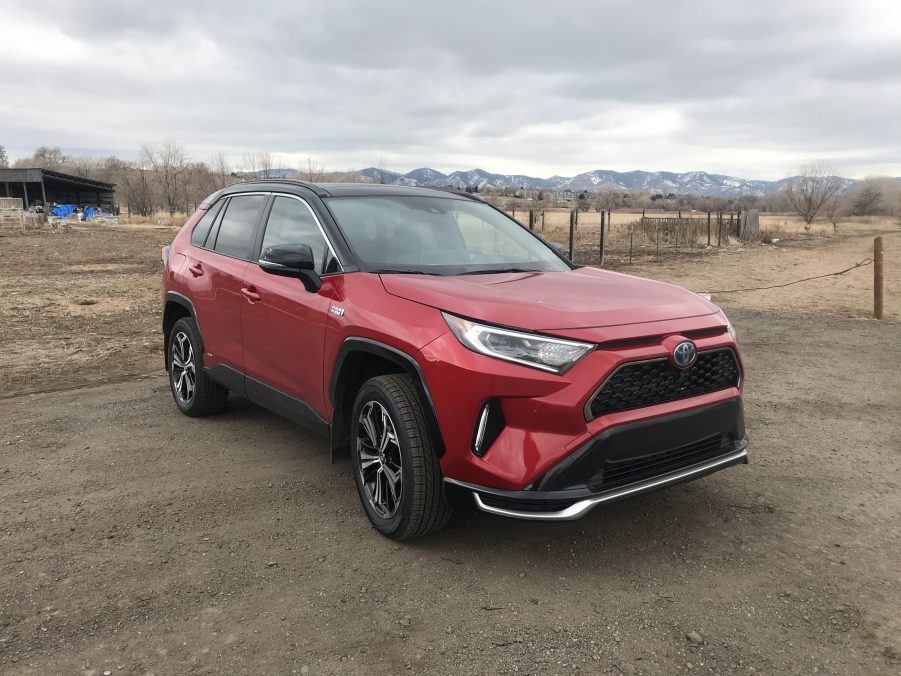
Buying a 2021 Toyota RAV4 Prime Makes No Sense If You Can’t Plug It In
If you read almost any other review of the 2021 Toyota RAV4 Prime, it will most likely talk about how quick the car is and that it’s the most powerful crossover hybrid on the market. While both of these claims are true, there’s more to this plug-in crossover than performance numbers and a curious “wow” factor.
I’ve spent some time with the RAV4 Prime and so far, my main takeaway is that if you’re able to plug it in at night or charge it fully during the day, then you’ll be able to reap the benefits of its performance and stellar fuel economy. But if you can’t charge it regularly, then you might want to look elsewhere.
The 2021 RAV4 Prime is a confident performer
Getting the 2021 RAV4 Prime as a press car was serendipitous for me considering I recently drove the regular RAV4 Hybrid, so it’s easy for me to compare the two. To be honest, they feel largely the same, considering that they both accelerate smoothly from a stop and get everything and everyone moving with enough heft, but the RAV4 Prime feels like has just a little more.
And I would expect nothing less, since the RAV4 Prime is up by 89 horsepower over its non-plug-in Hybrid little brother, thanks to a newer lithium-ion battery pack and more powerful electric motors that sit between the front and rear axles. And I could definitely feel those electric drive motors get to work since the first 40 miles that I drove was on electric power only.
When testing out the car’s “EV Only” drive mode, I couldn’t help but think that it would be perfect for anyone that lives within 20 miles from work and could charge the car at each location, negating the need to fill up fuel, possibly ever. But alas, I live in an apartment, which meant that I had nowhere to plug the car in when the battery depleted after a few drives.

Charging the Toyota RAV4 Prime Level 2 charger is easy, but takes time
Having no place to charge the Toyota RAV4 Prime, I downloaded the ChargePoint app on my phone to look up the nearest station. Fortunately, there was a charging station down the street from me at a Whole Foods parking garage, so I made a plan to charge it there and walk around the outdoor mall nearby as if I were shopping, in order to simulate how much of a charge you can expect during a normal shopping trip.
Once I was at the charger, I followed the prompts on the screen and plugged the charger into the RAV4 charge port. It’s easier than filling up a car with gas and best of all, it’s free!

I proceeded to walk around the adjacent mall and buy things that I really don’t need in my life, all while keeping an eye on the ChargePoint app on my phone to check on the car’s charging status. Toyota says that it will take about 4.5 hours to fully charge the battery using a 3.3-kW 240-Volt charger and 2.5 hours with a stronger 6.6-kW Level 2 charger.
The charger that I was using was charging at a rate of 5.8 kW, so it’s no surprise that it added about 10 miles onto the battery in the 49 minutes that I charged it, which is what you can typically expect in a normal shopping trip. Charging completely would have taken around 3.2 hours using that specific charger.

Buy the RAV4 Prime if you can charge it at home
Ultimately, that 10 miles that I added to the battery were used up pretty quickly the next couple of times I drove the car, leaving me with a slightly more-powerful RAV4 Hybrid once all the juice was depleted again.
Don’t get me wrong, the RAV4 Prime is powerful and it’s not too bad driving on the hybrid powertrain alone. But if you can’t plug the car in regularly and use its full all-electric potential more often than not, then you might be better off with the normal RAV4 Hybrid.



